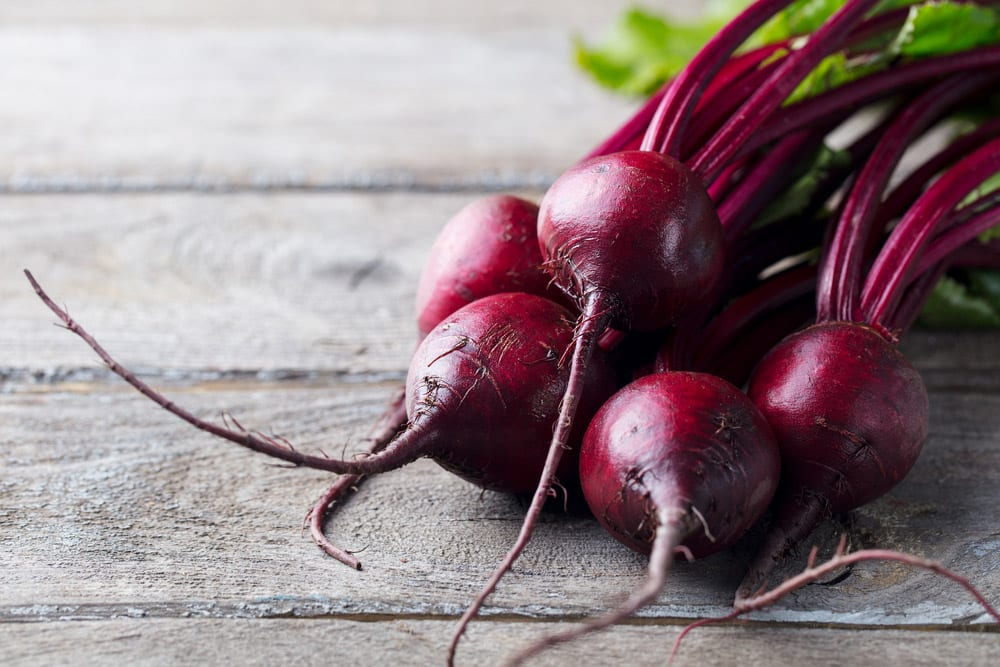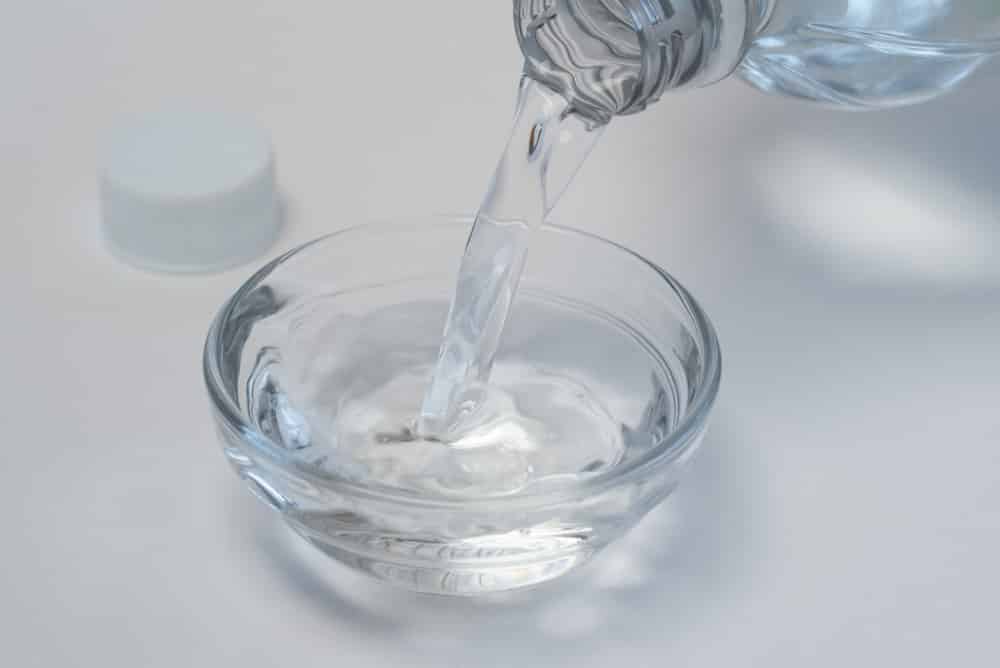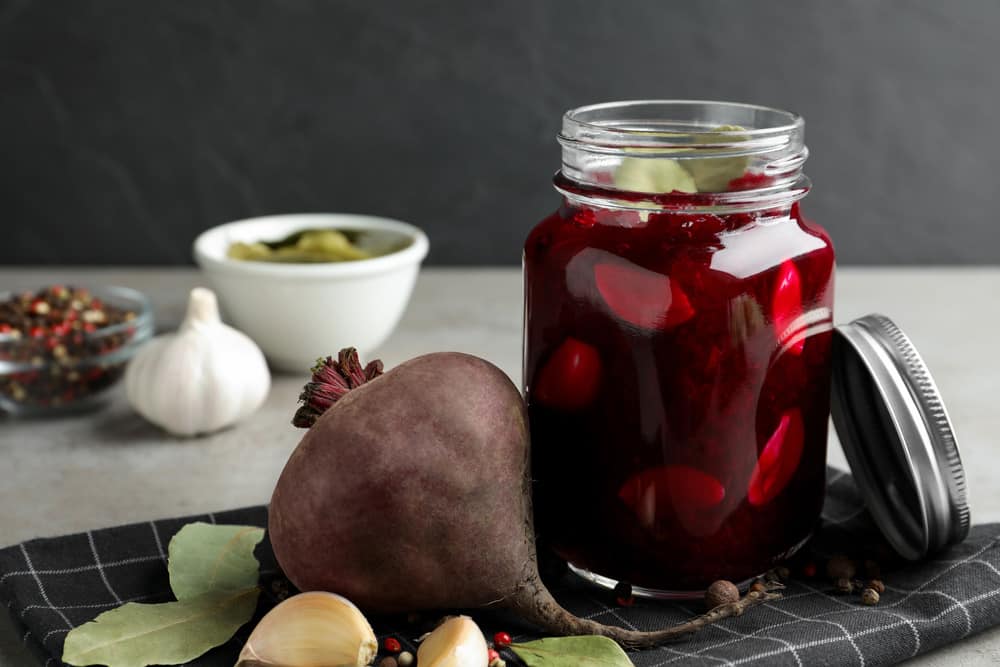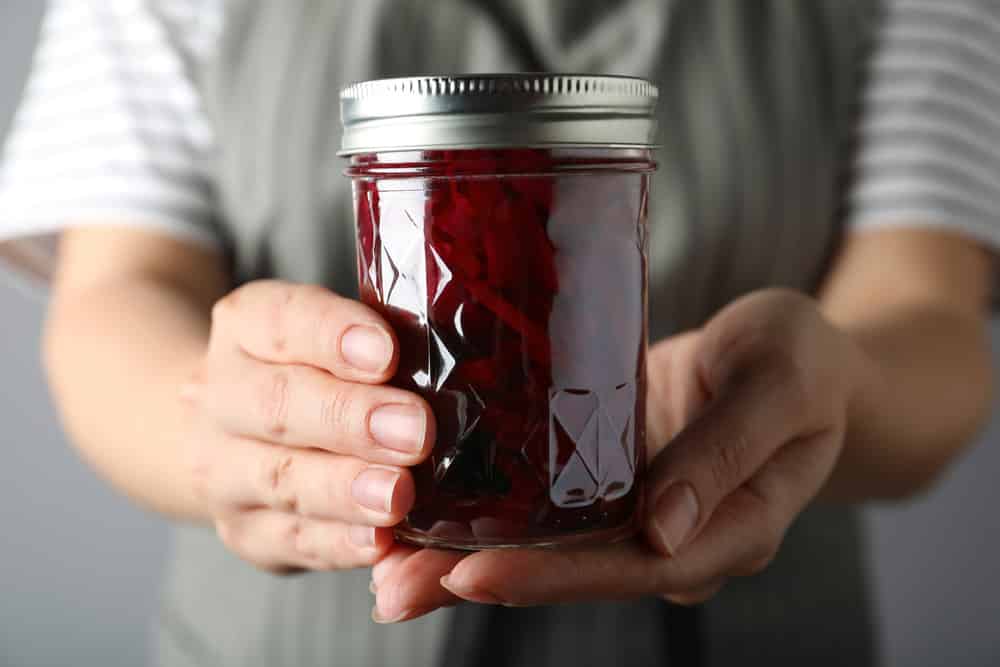
DISCLOSURE: This post may contain affiliate links, meaning when you click the links and make a purchase, I receive a commission. As an Amazon Associate I earn from qualifying purchases.
Beets can be super-cheap when you buy them in bulk. Some of you may have had a wonderful beet harvest from your vegetable garden. However, it can be a little intimidating to preserve them if you haven’t got a pressure canner or pressure cooker.
You may have heard that it is possible to get botulism from foods that have been canned using the water bath method. Please don’t let this put you off.
While canning non-acidic foods in a pressure canner is absolutely the only safe home preservation method, you may can ACIDIC foods using the water bath method. But beets aren’t acidic, you may be thinking.
That’s true but beets canned in pickling vinegar are acidic, delicious, and safe. We’ll take you step-by-step through how to can beets
How To Can Beets Without A Pressure Cooker
Warning: Pressure canning is more effective to kill the botulism potential. Water bath canning beets mentioned below is a traditional method and NOT a scientifically approved method. Try at your own risk!
Canning beets at home without using a pressure cooker is not a very difficult or expensive process. It is a little time-consuming though. Here’s what you’ll need:
[amazon box=”B07MZ97158″]
- Canning jars, lids, and seals
- Beets
- Pickling vinegar (we’ve provided a recipe)
- A large, deep saucepan with a lid
Step 1: Pick the Best Beets For Canning
To end up with a great end-product, you need to start with good ingredients. Do not try to can old, big beets. Choose ones that are fresh, uniform in size, and not too big. Discard any soft or decaying ones. Beets that are too old may turn brown when canned.
Step 2: Prepare the jars
Sterilize the jars, lids, and seals by boiling them in water for 10 minutes. Drain and set aside.
Step 3: Prepare the vinegar
[amazon box=”B002YI20NG”]
Ingredients:
- 2 cups white sugar
- 1 quart white vinegar
- 1 bay leaf
- 1 tablespoon whole cloves
- 1 tablespoon pickling salt (not iodized salt)
Mix all the ingredients in a saucepan and bring to a boil. Keep to one side until you are ready to bottle your beets. If you are canning a large number of beets, you may need to make a double or triple batch of vinegar.
Some people like to add mustard seeds, coriander seeds, dill seeds, and allspice berries to their pickling mix. We use pickling salt because normal table salt contains additives like anti-caking agents and iodine that can make the pickling vinegar turn cloudy.
You may use kosher salt as a substitute.
Step 4: Prepare the beets
Put the beets into a large saucepan and cover with water. Bring to a boil, then put the lid on and simmer until they are soft. Drain and leave them to cool. When cool, the skins will slip off easily so skin the beets, slice or dice them as you prefer, and set them aside for canning.
Step 5: Bottle
Spoon beetroot into each jar until about ¾ full. Then pour the hot pickling vinegar over them using a ladle, and leave a small amount of headspace. Ensure the beets are covered in brine. Put 3 or 4 of the cloves into each jar.
Use a spatula to remove any air bubbles from the jars before sealing them.
Step 6: Process
Put a rack in the bottom of a large, deep saucepan or stockpot and stand the jars upright on this. Do not overcrowd the jars – they should not touch one another. Add enough water to come over the top of the jars and cover them by at least an inch.
Bring the water to a boil, then cover the pot with its lid and boil for at least 10 minutes.
Step 7: Finishing Touches
Remove the jars from the water and leave them to cool for 12 hours. Check for a good seal on the jars – you may hear the lids “pop”. Dry the jars well then label them with the contents and the date you processed them. Store the jars in a cool, dry pantry space.
Stand back and admire your glistening purple jars of beets! Your pickled beets will be ready to eat within 1-2 weeks and will keep for up to a year. Once a jar has been opened, store it in the fridge. It will keep for up to a month like this.
If you are looking for a SAFE method, try PRESSURE CANNING beets as per the video below!




